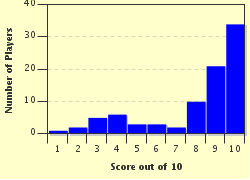Quiz Answer Key and Fun Facts
1. This map shows how each constituency of the United Kingdom voted at the 2010 General Election. Given that the Conservatives are represented by the colour blue, Labour by red, Liberal Democrats by gold and the Scottish National Party (SNP) by yellow, which party represented the largest proportion of England in terms of area immediately after the election?
2. The grey-coloured constituency to the northwest of London is Buckingham and this seat was won by John Bercow in 2010. The grey colour reflects the fact that John Bercow was an independent candidate but for what reason did he stand as an independent?
3. This electoral map from 2010 depicts all the constituencies of the United Kingdom as though they were all of the same geographical size. Which of the following political parties had the greatest success in Scotland at the 2010 UK General Election?
4. Given the fact that Labour is represented by red, Conservatives by blue, Liberal Democrats by yellow and Plaid Cymru by green, which of the following statements is true about the 2010 General Election results in Wales?
5. Which party won the most seats at the United Kingdom's 2010 General Election?
6. The biggest story of the 2015 UK General Election was what happened in Scotland. Given the maps provided (2015 results on the left, 2010 results on the right), which of the following fundamentally changed the political landscape of Britain?
7. Which part of the United Kingdom, which has historically had its own unique political landscape, didn't return a single Labour, Conservative or Liberal Democrat Member of Parliament (MP) in the 2015 General Election?
8. If somebody were to be seen wandering the streets of the United Kingdom, navigating the campaign trail in the run up to the 2015 General Election wearing this badge, which of the following party leaders would have directly benefitted from the person's vote?
9. Which party won the most seats at the United Kingdom's 2015 General Election?
10. The 2015 UK General Election was considered to be one characterised by disproportion. What political party, led by Nigel Farage, has a case for feeling rather hard done by in terms of vote share to seat share disproportion?
Source: Author
jonnowales
This quiz was reviewed by FunTrivia editor
stedman before going online.
Any errors found in FunTrivia content are routinely corrected through our feedback system.

